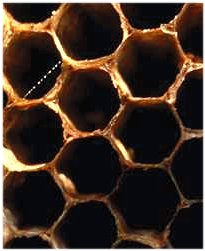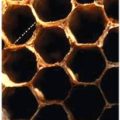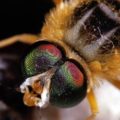
Honeybees in colonies affected by colony collapse disorder (CCD) have higher levels of pathogens than their non-affected counterparts, but no individual pathogen can be singled out as the cause of CCD, according to a new international study.
The researchers, from Penn State’s College of Agricultural Sciences, the University of Liege, Gembloux Agricultural University, North Carolina State University and the U.S. Department of Agriculture’s Agricultural Research Service (ARS), collected samples of adult bees, wax comb, pollen and larvae from 91 colonies in 13 apiaries in Florida and California and analyzed more than 200 variables, including the presence of parasites such as varroa and tracheal mites; infection by bacteria, viruses and fungi; pesticide levels; nutritional factors; and bee physiology. The result? No single factor was found consistently only in those colonies suffering from CCD.
The study’s findings, appearing in the journal PLoS ONE, illustrate the complexity of solving the CCD problem, according to lead author and Penn State entomologist Dennis vanEngelsdorp. “Our results suggest that this condition may be contagious or the result of exposure to a common risk factor that impairs the bees’ immune systems, making them more susceptible to pathogens,” said vanEngelsdorp. VanEngelsdorp noted that higher pathogen loads are likely to have caused CCD symptoms, but what causes the bees to become infected with so many pathogens in the first place is still not known. “Although pathogens seem likely to play a critical role in CCD, that role may be secondary, much like AIDS patients die from secondary diseases,” he explained.
The researchers also found detectable levels of residues from 50 different pesticides in all of the sampled colonies, but there was no association between increased pesticide levels and CCD. In fact, the pyrethroid insecticide Esfenvalerate was more prevalent in the wax in non-CCD colonies, being found in 32 percent of non-CCD colonies compared to 5 percent of the CCD colonies. Coumaphos, which is used to treat varroa mites in honeybees, also was found in higher levels in non-CCD colonies.
ARS entomologist Jeff Pettis said future research should focus on monitoring parasite, pathogen and pesticide loads, as well as potential interactions among pesticide and pathogen loads. “While the study’s results don’t indicate a specific cause of CCD, the results do help scientists narrow the direction of future CCD research by showing that some possible causes are less likely,” he concluded.
Related:
Two Bees? Aw, Not Two Bees…
Bee Boffins Abuzz With Theories About Honeybee Decline
Pesticide Suspected In Case Of AWOL Honeybees








Comments are closed.